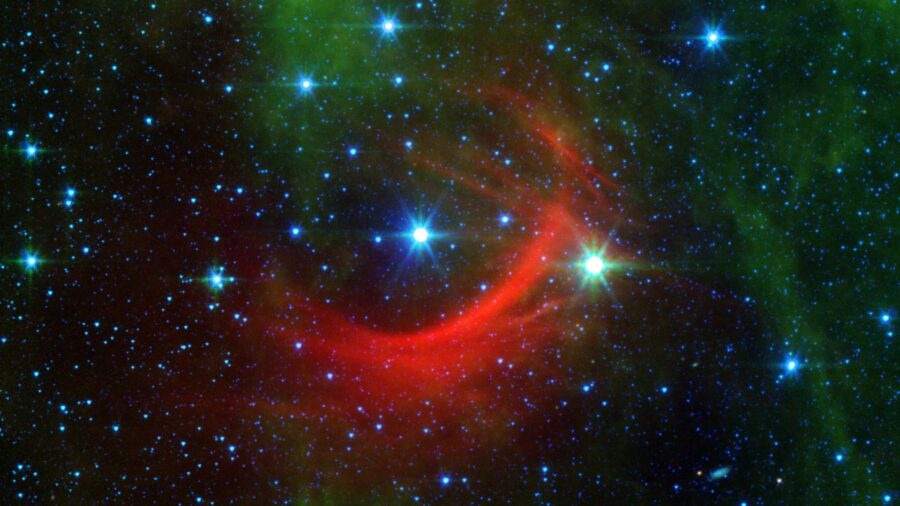Pulsar Eating Another Star And Shooting Cosmic Cannonballs

Pulsars are strange little stars. While still classified as stars, Pulsars are actually “corpses” of stars—highly magnetized, rotating neutron stars that emit beams of electromagnetic radiation from their magnetic poles. One of these stars, now dubbed a “vampire star,” is devouring another one and shooting cosmic cannonballs comprised of debris.
According to The Byte, astronomers have discovered a fascinating pulsar (they’re all quite fascinating, actually) that has been stripping matter from its companion star for decades now, launching the stolen matter into the cosmos like cosmic cannonballs.
J1023 has a close binary partner, and the intense gravity of the former steals the matter from the surface of the latter, gathering the matter in a ring around its surface.
And this isn’t the only thing strange about this pulsar; named PSR J1023+0038, it seems to pulse in two different modes. This is quite strange because, despite their weirdness, pulsars emit pulses at surprisingly regular intervals, which actually makes them quite predictable.
How predictable are pulsars? Well, they’re so predictable that astronomers have used their precisely timed flickers to detect low-frequency gravity waves. But to understand the behavior of the vampire star, let’s take a step back and discuss what pulsars actually are.
What Are Pulsars?
Pulsars begin their lives as typical stars that are a few times more massive than our Sun. As they age, they fuse through their hydrogen supply to form helium atoms. This fusion releases a tremendous amount of energy but no debris and cosmic cannonballs.
Once the hydrogen is exhausted, the star begins fusing helium, which produces carbon. As the process progresses through the star’s life cycle, the carbon fuses into magnesium, neon, and heavier elements. Neon burning produces oxygen and magnesium, which in turn produce sulfur, phosphorous, and silicon, and silicon then produces iron.
In the end, once all the fuel is spent, the core collapses under its own gravity, but because it lacks enough mass to become a black hole, it becomes a neutron star—a dense cosmic cannonball called a pulsar.
However, since they shed a massive amount of matter during their supernova explosion but retain all the rotational momentum from their previous life, pulsars gain speed—pulsars are incredibly fast, and they can make up to 60,000 revolutions per minute (yes, you read that right).

At the same time, the intense magnetic field associated with pulsars squeezes the energy towards the poles, blasting it out in streams of light—hence the name, pulsars. However, something strange happened to our pulsar that now blasts cosmic cannonballs.
About a decade ago, J1023 started switching between low and high brightness, which was unprecedented at the time. Now, after a decade of observation, the flickers have been tied with the matter our vampire star has stolen from its companion star.
It would seem that J1023 has a close binary partner, and the intense gravity of the former steals the matter from the surface of the latter, gathering the matter in a ring around its surface—similar to Saturn. And this is directly tied to the aforementioned cosmic cannonballs.
As the polar beams move around the pulsar, they strike the ring matter stolen from the nearby star and blast it into space as a cosmic cannonball. This periodic blast out of matter is actually affecting the low and high brightness pulses that are associated with the vampiric star corpse—further attesting to the wonders of the universe.












